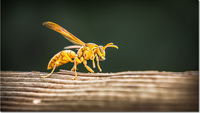Wednesday, June 8. 2016
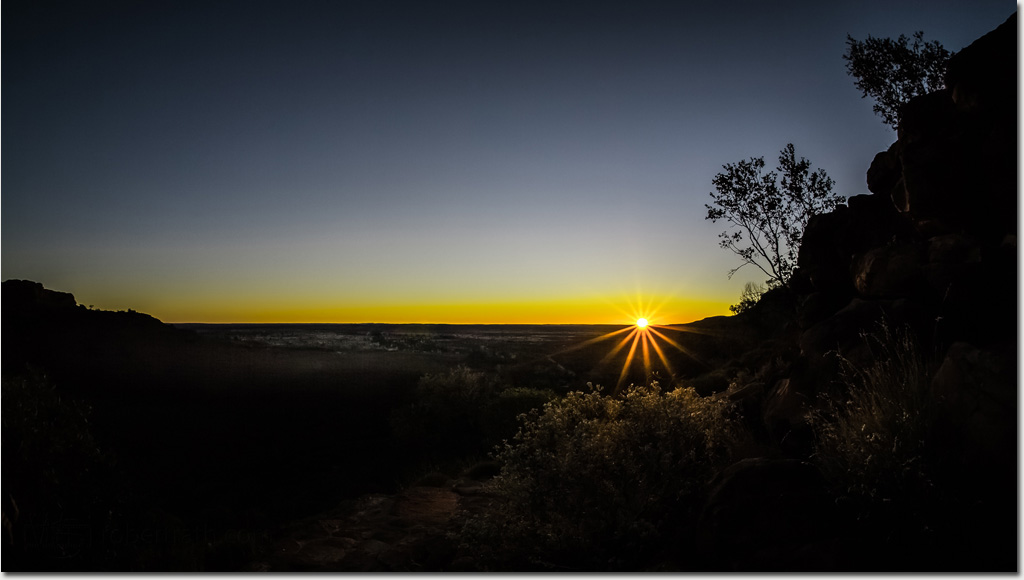
I remember once hearing an old Polynesian saying, 'The gods do not deduct from man's allotted span the hours spent in fishing'.
I am certain that there also exists the same grace when taking the time to watch the sun fall through the changing colours of the darkening horizon into evening twilight.
For a time we watched that golden orb descend its own diameter every couple of minutes until it kissed the land, and slid gently beneath a desert sea.
We watched the twilight fade through orange, green then to a dim violet grey before making our way down onto the now starlit plain.
Photo: Robert Rath, 'Desert Grace', 1/160s f/16 ISO160 15mm
Saturday, June 4. 2016
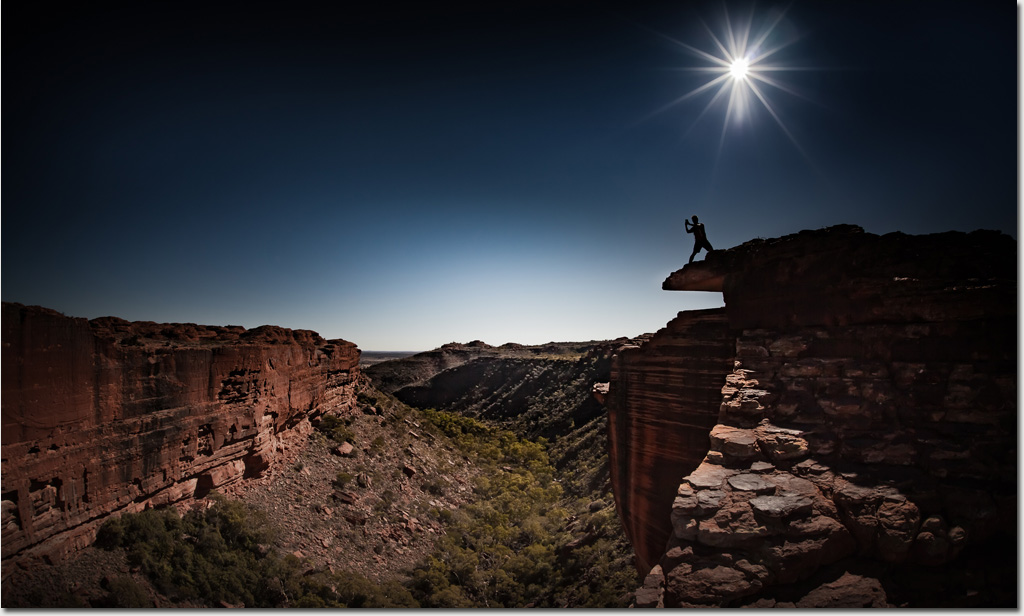
Down in that valley far, far below hidden amidst the unlikely combination of eucalyptus trees and ancient cycad palms is Kings Creek.
From up here the sense of scale is all but gone, the grandeur becoming abstract with the world below looking like some artisan's crafted landscape garden.
From down there looking back up at the red walls of Kings Canyon the scale is both stunning and overwhelming.
To appreciate a place like this just a little you need many perspectives. To really appreciate it you need time, as much time as you can give it and a willingness to let it seep into you.
I took so many images here and they all pale against my memory. Instead I have chosen some drama with Roman completely unaware where he was standing as tries to capture his own memories and feelings.
Kings Canyon is a place I will definitely come back to spend time without trying to capture what simply can't be captured in a camera.
Photo: Robert Rath, 'To Capture That Which Can't be Captured', 1/5000s f/8 ISO160 15mm
Monday, May 30. 2016
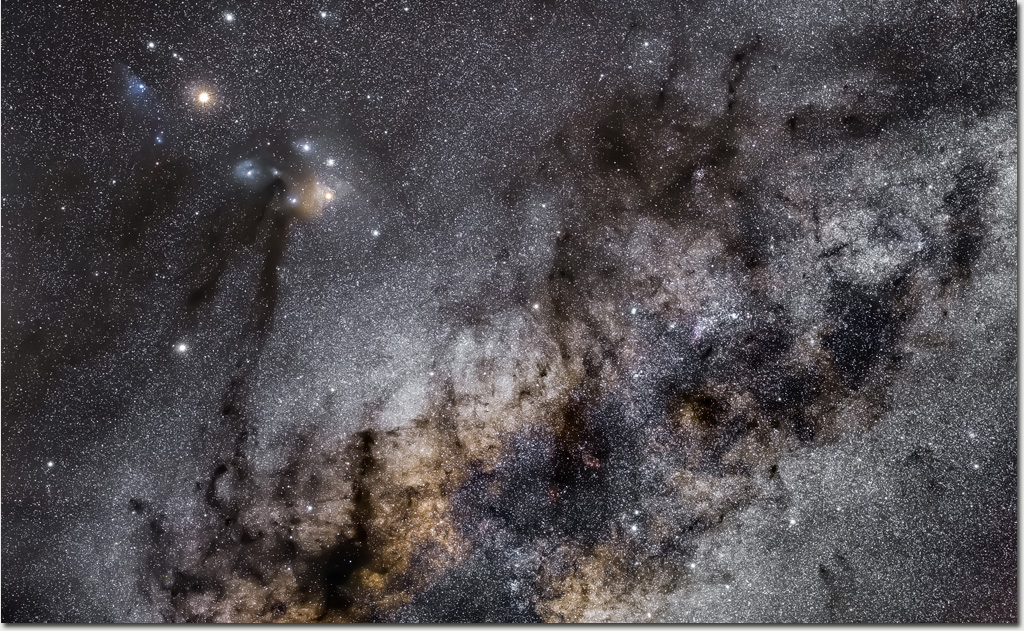
Looking directly up into the Milky Way and the constellation of Scorpio I see two wandering planets amid a sea of stars
An orange Mars, the largest and brightest lingers on the back of the scorpion gazing off at the eerie glow of the Blue Horsehead Nebula to the left.
The red giant Antares lights a vast portion of the Rho Ophiuchi cloud complex with a soft orange glow while the speckled white star cluster of Messier M4 just above it hides its true nature, some 75 light year across from 7200 light years away in the distant past.
A white Saturn off to the left of centre pretends to be like any other bright star only its solid light gives its true nature as a wanderer of our solar system away.
The magnificent black Lagoon Nebula at the bottom looks for all the world like part of the night sky is missing as like so much of the dark structures of our Milky Way it hides the millions upon millions of unnamed stars behind it.
Try as I might, there really are no words to describe all this in one small part of the Milky Way under an Uluru desert sky.
Photo: Robert Rath, 'Wandering In a Sea of Stars', 33 x 60s f/4 ISO1600 50mm
Saturday, May 28. 2016
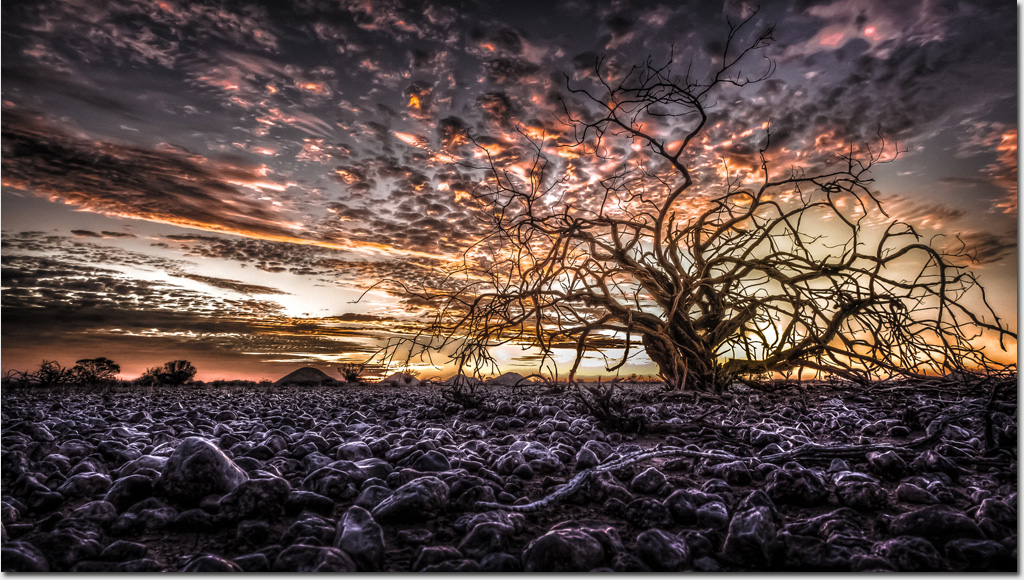
There is a huge debate debate in Australia in regards to the storage of radioactive waste.
As the world grapples with the problems of dealing with the waste of nuclear power stations, science and the use of radioactive materials in medicine some governments are looking at Australia's vast barren unpopulated outback regions as a possible dumping ground. Unfortunately some people in our government are seeing only the commercial opportunity and are lobbying their cause.
The arguments for dumping nuclear waste here are strong. The arguments against dumping are strong. Yes we have vast regions which are unpopulated, dry and geologically stable but if you ever get to visit these places you will find they have life and beauty all of their own.
Perhaps the real problem here, the creation of waste is the one which should be tackled rather than sweeping it under the rug or into the outback.
Photo: Robert Rath, 'Outback Apocalypse', 1/8s f/18 ISO250 15mm
Wednesday, May 25. 2016
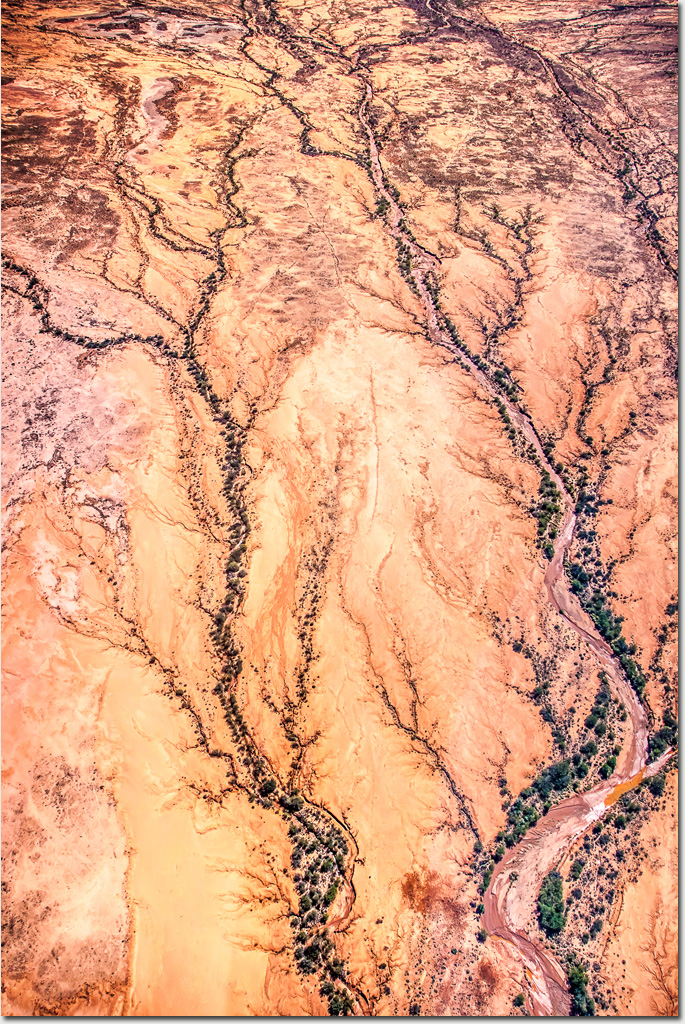
These intricate structures carved into Petermann Pound in the Watarrka National Park carry the lifeblood of the Australian outback, water.
It had been a week since the rains and still some water remains in pools and some has been taken into the earth to nurture the trees of the pound.
Most however has been collected into Petermann Creek before finding its way into the Finke River and eventually the South Australian border hundreds of kilometers to the south east.
From up here these desert waterways could indeed be the veins of some mythical dream-time creature giving life to this arid part of the Australian outback.
Photo: Robert Rath, 'Veins of Life', 1/1000s f/5 ISO100 17mm
Monday, May 23. 2016
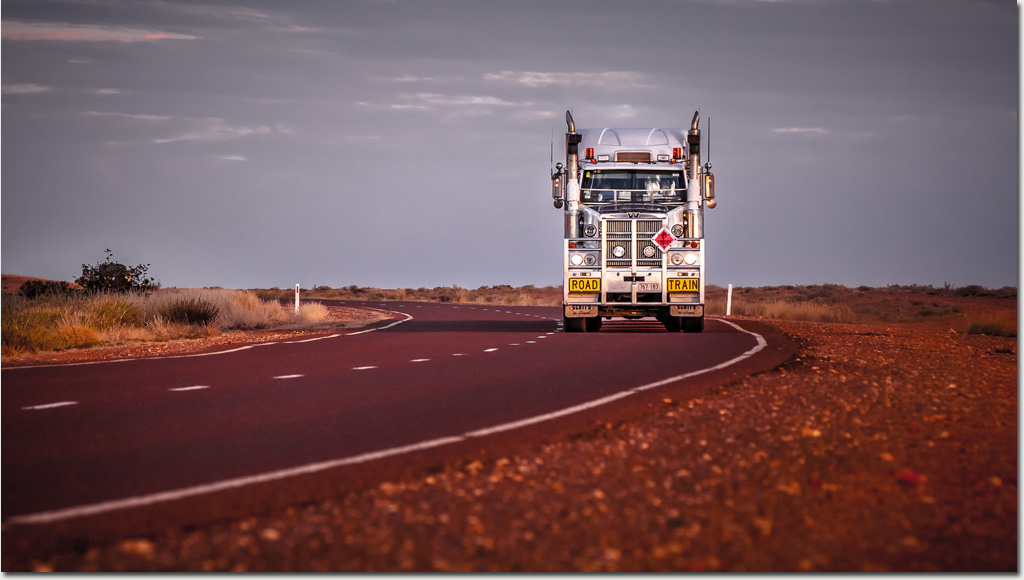
Nothing beats the raw power power of a two kilometer long diesel-electric train pulling a full load but the interstate road trains we shared the roads with have an awesomeness all of their own.
Most of the road trains we saw consisted of a prime-mover and three trailers and probably weighing in between 100 and 150 tonnes. You really get to appreciate their scale when attempting to overtake a convoy of two or three in a row.
I have great respect for the drivers of these brutes, driving hundreds of thousands of kilometers each year driving a vehicle that could easily take out a small outback town in moment of inattentiveness.
I'm no truck enthusiast but I can appreciate what some people are with these beasts on our roads.
This Australian made beast is a Western Star 6900 FXC powered by a Cummins ISX Euro 5 ,15 litres 600Hp diesel engine.
Photo: Robert Rath, 'Desert Train', 1/250s f/5.6 ISO250 200mm
Sunday, May 22. 2016
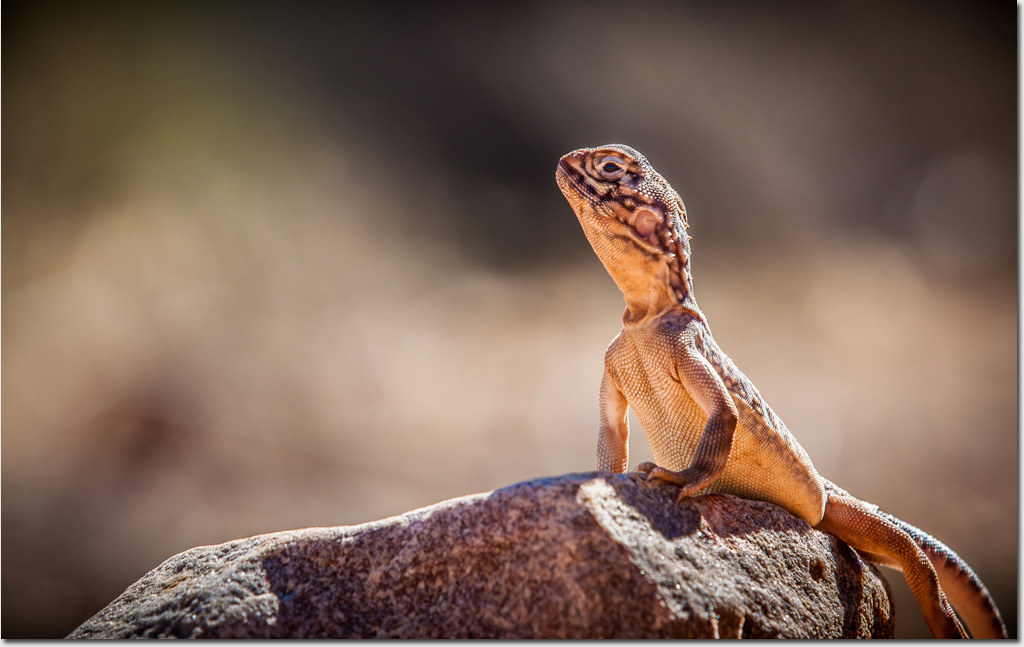
For the most part the critters we encountered at Uluru and Kings Canyon were timid and did not easily allow themselves to be photographed.
This Ring-tailed Dragon (Ctenophorus caudicinctus) at the start of the Kings Canyon rim walk was one notable exception.
He was happy to sit here on this rock watching just meters from the walkers passing along the trail, most of whom did not even notice him there.
Only when I started crawling up to him on my belly did other passers by take notice. I'd swear the expression on that dragon's face was amusement at a human on his level.
Photo: Robert Rath, 'Ringed Tailed Dragon', 1/100s f/8 ISO100 200mm
Friday, May 20. 2016
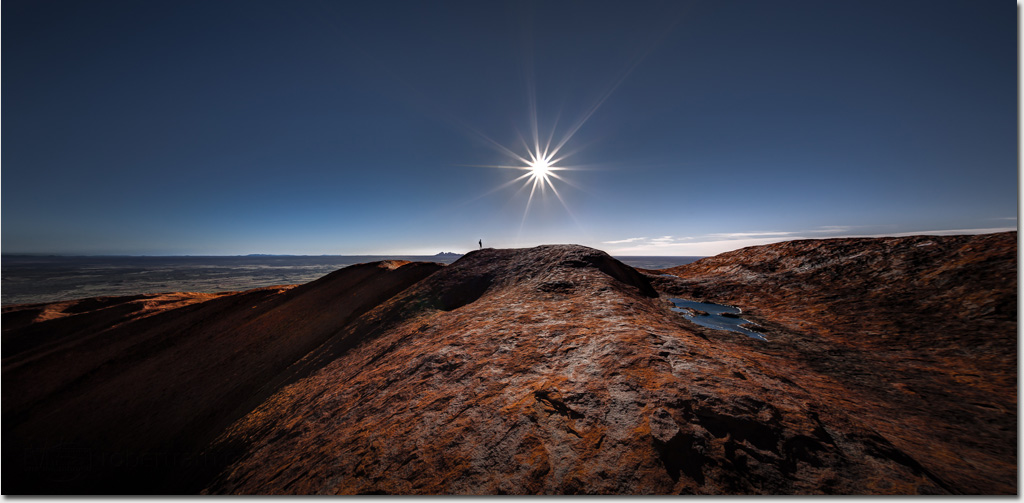
A view sought after by many visitors to Uluru who then encounter the ethical dilemma which follows, climb and fulfill a lifelong dream or respect the wishes of the traditional owners and stay off the rock.
In 1985 the Australian government gave title back to the traditional owners of the region and negotiated a 99 year lease allowing them to continue developing the the area for both its tourism and cultural importance.
Most Australians will have at least considered their decision to climb or respect this incredible sight from the ground before making the effort to travel here. Nearly all international visitors will only become aware of this when they are reading the sign at the beginning of the climb having just traveled tens of thousands of kilometers.
This international visitor chose to fulfill his lifelong dream and gaze out from a very privileged vantage.
Photo: Robert Rath, 'Privileged Vantage', 1/250s f/13 ISO100 15mm
Thursday, May 19. 2016
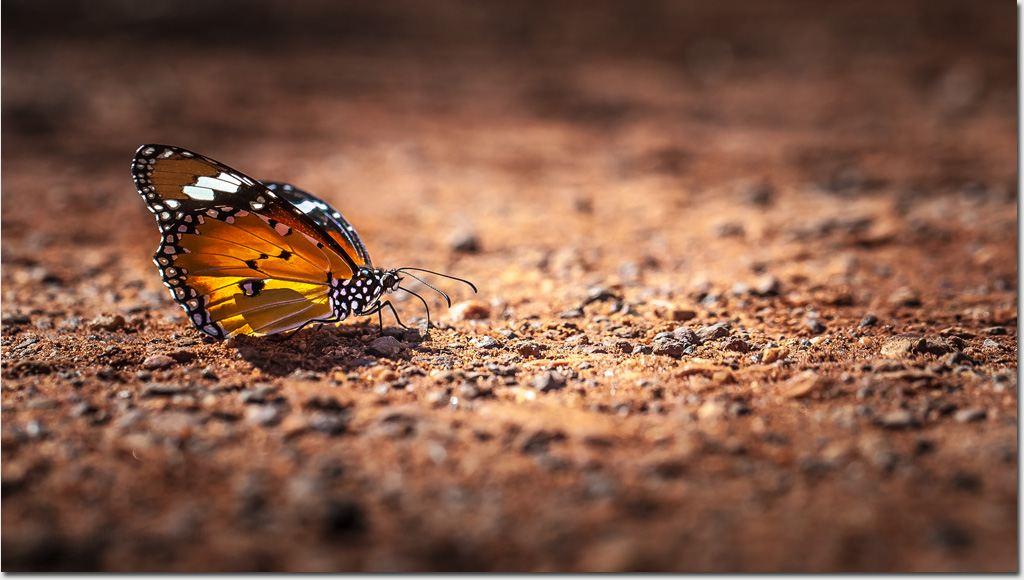
One of the most prolific travelers on the planet is the Wanderer or Monarch Butterfly, (Danaus plexippus), and so I was not surprised to find this beautiful creature as we walked around the base of Uluru.
Here a wanderer rests on the damp earth from the recent rain drinking from the minute amounts of water available.
Photo: Robert Rath, 'Desert Beauty', 1/400s f/6.3 ISO100 100mm
Wednesday, May 18. 2016
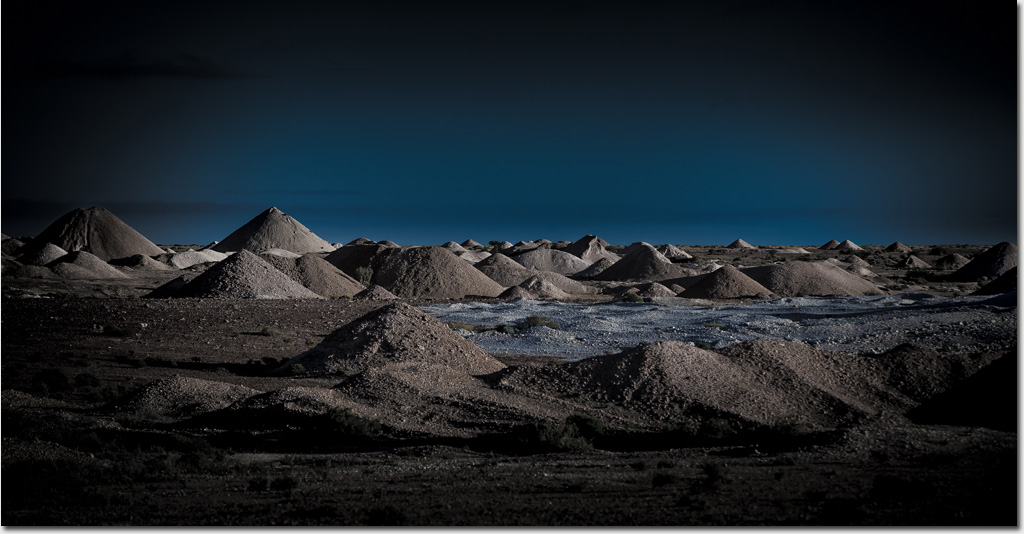
Coober Pedy in outback South Australia is a very strange place and that strangeness begins in the desert landscape well before you arrive.
Like some alien landscape the white and brown cones of unearthed soil, the dumped mullock heaps of opal mining, dot the landscape.
Each little mound tells of an abandoned search into the parched earth for opal. The larger mounds tell of more promising but ultimately abandoned mines as well.
This bizzare lanscape extends for tens of kilometers around Coober Pedy and gives this place uniqueness all its own.
Photo: Robert Rath, 'Mullock Landscape', 1/1000s f/6.3 ISO100 125mm
Tuesday, May 17. 2016
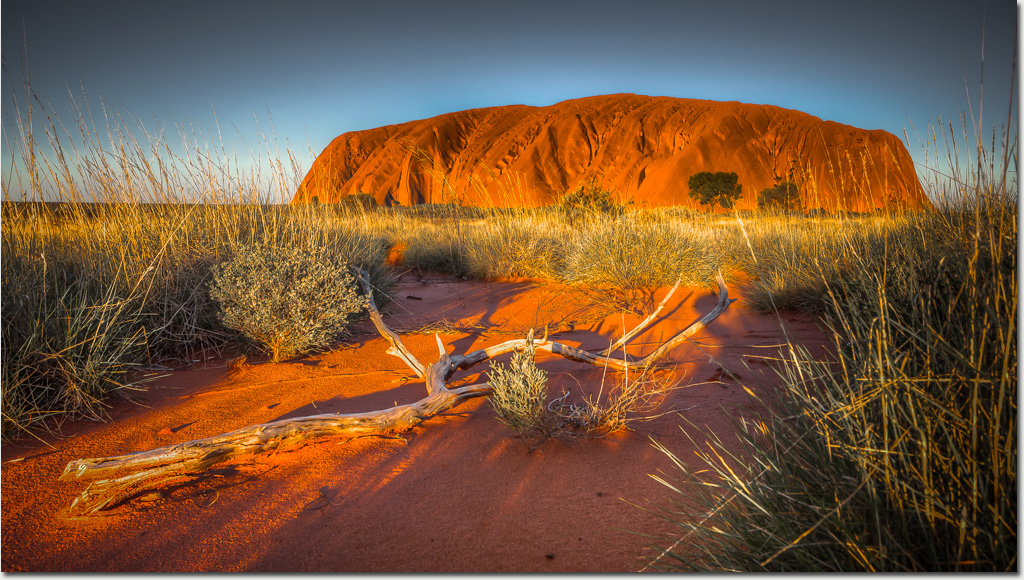
Arguably sunset on Uluru (formerly Ayers Rock) is Australia's most famous, most iconic and most photographed event.
When I finally got to experience this for myself, watching the colours changing as the sun fell in the west, I felt intimidated by every image I had ever seen and if I could capture even a glimpse of the feel of this beautiful sight.
So after driving 1600 kilometers I felt privileged to photograph an Uluru sunset and share this image but to appreciate this special place there is no substitute for being here.
Photo: Robert Rath, 'Uluru', 1/50s f/15 ISO100 27mm
Tuesday, May 3. 2016
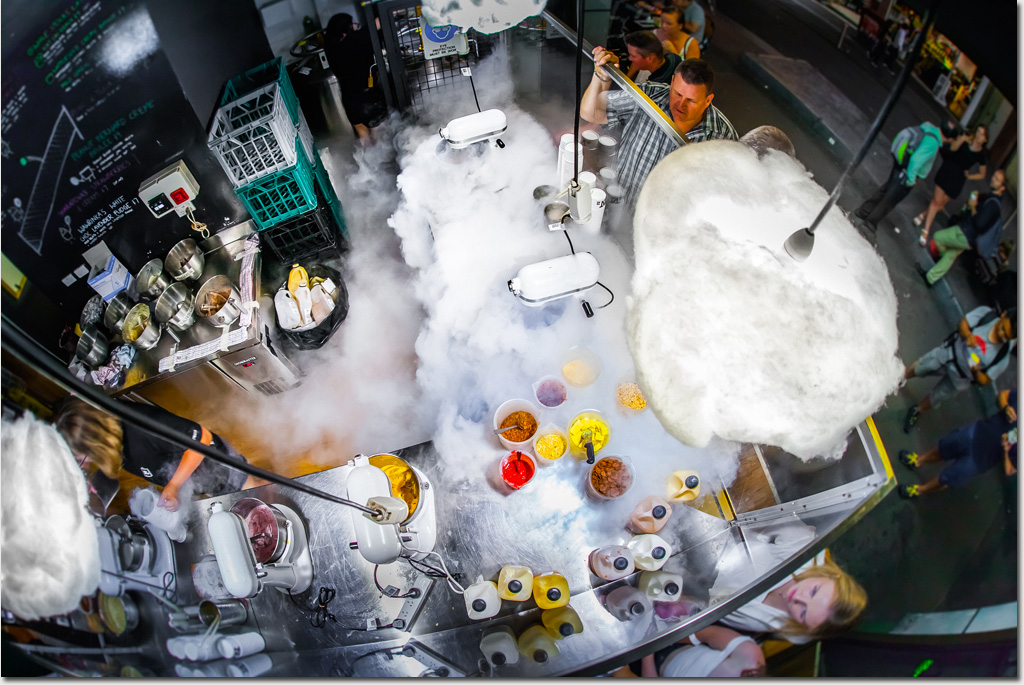
The coolest icecream I have even experienced was created in front of my very own eyes at N2 on Dixon Street in Sydney.
Step one create the mix.
Step two start blending.
Step three pour in a jug of liquid nitrogen.
Step four enjoy the show.
Step enjoy the icecream.
I never knew tha icecream could an extreme sport!
Photo: Robert Rath, 'N2', 1/50s f/5 ISO1250 15mm
Monday, May 2. 2016
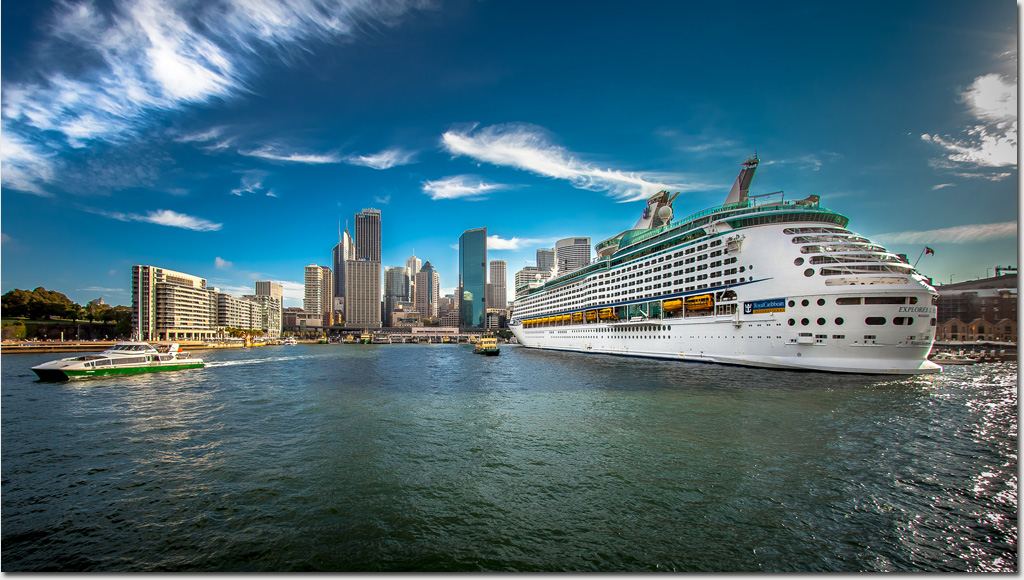
Cruising into Circular Quay with the Harbour Bridge on your right, the Opera House on your left and that gorgeous Sydney cityscape in prime position is an iconic experience that every visitor to Sydney should make the effort for.
On this occasion though the view was spoiled by the 'elephant in the room'. A very big, very white and very in your face elephant.
From some distance off the Royal Caribbean Explorer of the Seas is an awesome and novel sight as she sits in berth. As you get closer though the she starts to get intimidating to the point where most of Sydney is blocked from view by a massive floating wall of white painted steel.
The brochure promises adventure and to be fair I've never sailed on a cruise ship but I think I'd still prefer something a little smaller, a little rougher and a lot more real for the kind of ocean adventures I'd prefer.
Still, I think you'll agree, it's a big boat and to some size really is everything.
Photo: Robert Rath, 'Big Boat', 1/640s f/8 ISO160 15mm
Sunday, May 1. 2016
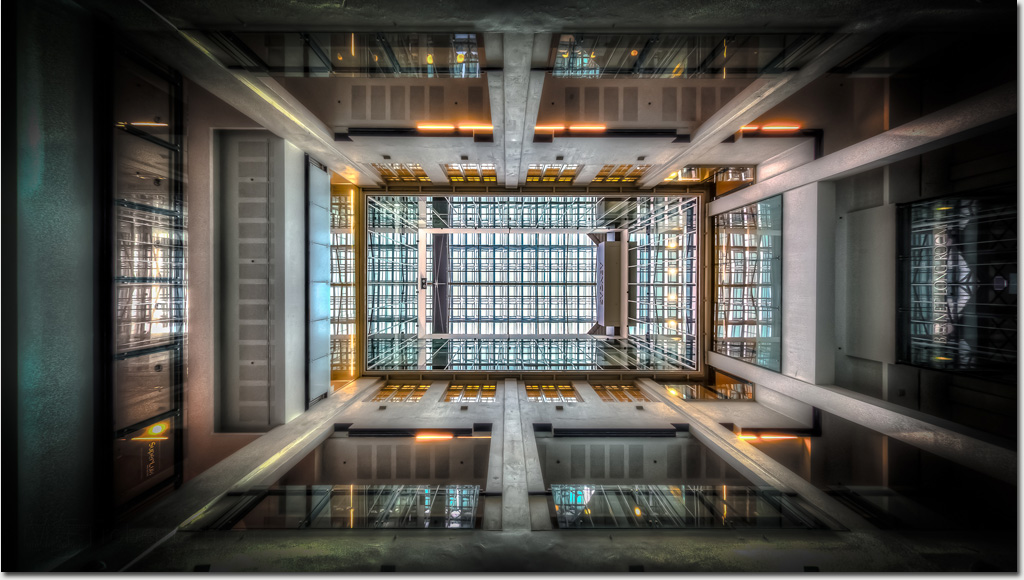
When we entered the foyer of Customs House in Sydney it was busy, noisy and there were people everywhere.
Some people gazed into the atrium void above, others marveled at the scale replica model of Sydney below the glass floor.
Tour groups posed for photos while tourists in pairs or alone wielded selfie sticks to capture them selves against the historical backdrop.
All the while there was a subdued cacophony of conversations fill with an occasionally recognisable word of some other Sydney tourist attraction.
From the outside The Customs House appears every much the historic 130 year old building it has always been.
From the inside though you could be in the lobby of some modern building anywhere in the world.
From the inside only the words 'Sydney' and 'Barnet Long Room' give its identify away.
When we left many hours later we were all alone and could enjoy this space in beautiful silence.
Photo: Robert Rath, 'Customs House', 1/2s f/11 ISO800 15mm
Friday, April 29. 2016
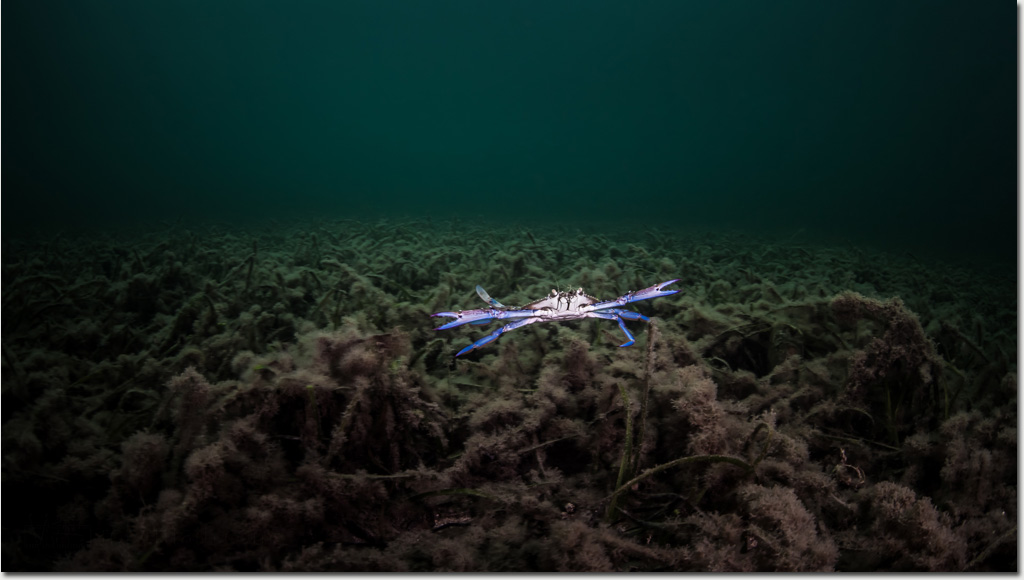
I always wondered why you had to travel North to find and catch the delicacy we grew up with, the Blue Swimmer Crab (Portunus armatus).
Living on the coast in South Australia you have to travel thousands of kilometers to the west or to the east before you can start following the coastline heading north. This is not the kind of north I refer to. Fifty kilometers north up into the Gulf of St Vincent is enough to come across blue swimmers in their hundreds.
All these years later I think I have discovered their secret, the Blue Swimmer Crab is a tropical species that has become locally trapped here in the relatively warm waters of our Spencer and St Vincent gulfs.
So next time you see these intimating crabs on a cold water South Australian dive just imagine you are in the tropics and try and convince yourself it's not so cold after all.
Photo: Robert Rath, 'Blue Swimmer', 1/160s f/13 ISO320 15mm
Wednesday, April 27. 2016
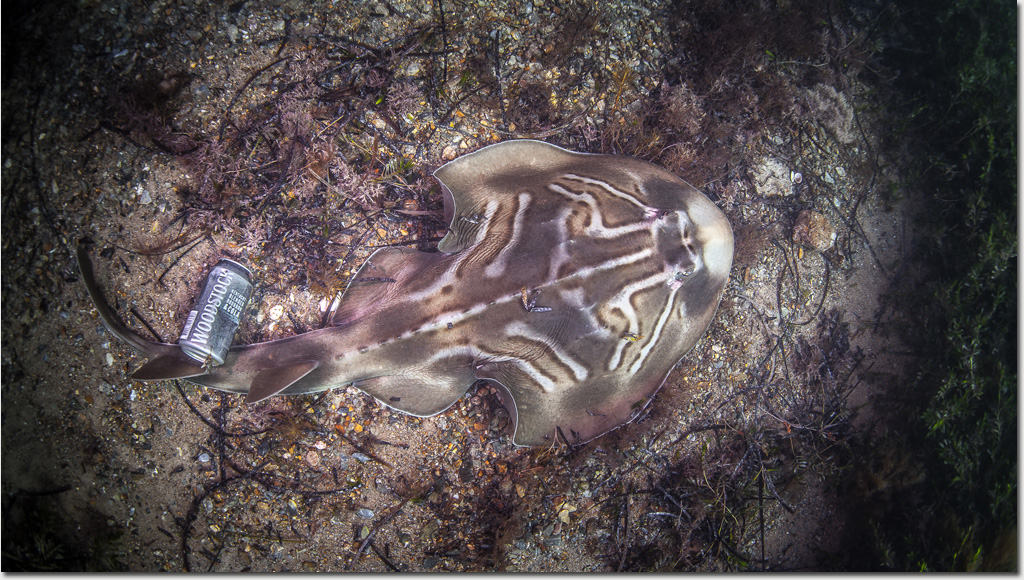
The ocean is filled with monsters.
I remember when I could count my years on two hands spending holidays with extended family at a little coastal village called Port Parham.
A particular aspect of this shallow coastal location is being able to go out fishing way off the beach wearing nothing but shorts, a jumper and a sturdy pair of boots spending the entire time wading in up to chest-deep water.
After dark the adults would head out with dab nets and prongs and floating tubs of ice and beverages to fish for gar and blue swimmers often not returning until well after we had gone to bed. In the morning they would enthrall us with tales of inky black shapes swimming around them as they fished, of the monster they tried to spear which was like striking rock, and how they were thrown backwards in the wake of its escaping fury.
Every now and then a small fiddler ray was part of the catch, with accompanying stories of being harassed by its big brother as they fled back to shore.
So it is today that every time I see a Southern Fiddler Ray, (Trygonorrhina dumerilii) I am taken back to those carefree days. If there just happens to be an empty can of bourbon and cola left on the ocean floor I smirk as I imagine how the monsters got the fisherman.
Photo: Robert Rath, 'Woodstock', 1/160s f/5.6 ISO160 15mm
Tuesday, April 26. 2016
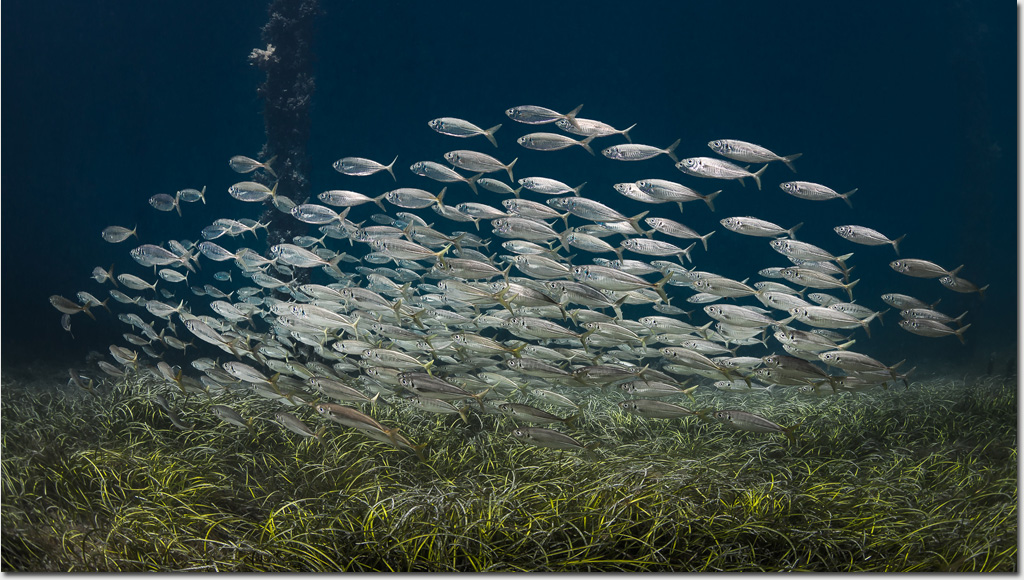
There is always a school or two ... or three of Yellowtail Scad ( Trachurus novaezelandiae) cruising in and around the pylons under the old Rapid Bay Jetty.
Not so common is to find them out on the adjacent seagrass beds. It must schoolies week for Yellowtail Scad.
Photo: Robert Rath, 'Schoolies', 1/160s f/8 ISO160 15mm
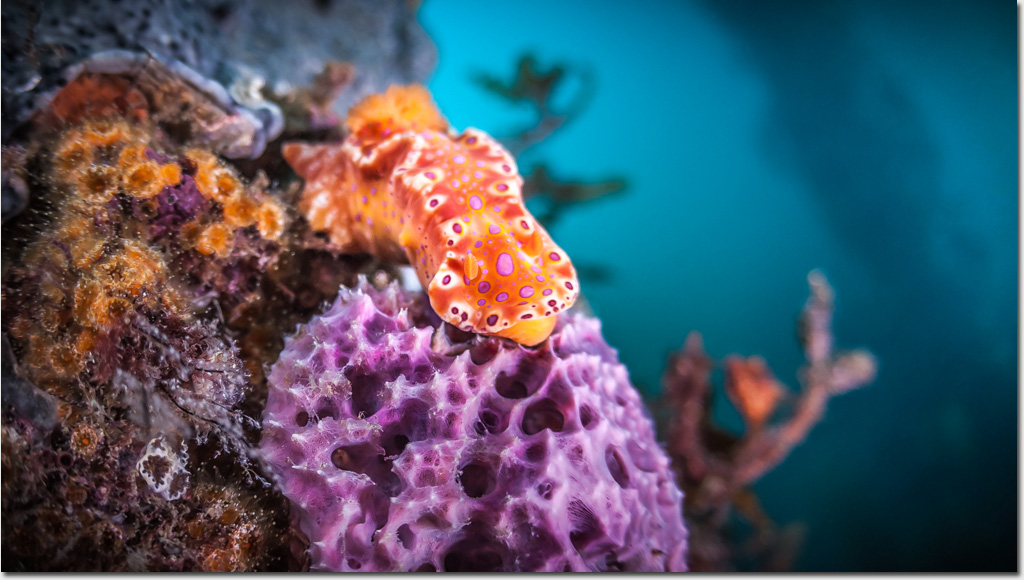
What's pink and fluffy and tastes great?
The pink spongy mass might look like fairy-floss but that's where the similarity ends, unless of course you are a nudibranch.
This is the first time I have found this species of nudibranch, Ceratosoma brevicaudatum, eating this particular species of sponge. Perhaps that's where it gets its pink spots from!
In this image I have used an imaging style called 'close-focus wide-angle'. Unlike most CFWA images however I have chosen to shoot wide open giving an unusually narrow depth of field for this style.
CFWA is often used to portray a subject in its larger environment however by also using a wide aperture I have separated foreground and background and created a portrait feel.
So back to the nudibranch and its spongy pink lunch on a Rapid Bay jetty pylon, I'm fairly certain it tastes nothing like fairy-floss. Though to a nudibranch, maybe it does!
Photo: Robert Rath, 'Nudi Fairyfloss', 1/160s f/2.8 ISO160 15mm
Friday, April 1. 2016

Leafy Seadragons are beautiful creatures to gaze upon but not always easy to find.
As divers we swim around looking down at the sand, down at the seagrass, down at the sponges and sea-stars and other benthic critters.
This is not the best strategy for seeing a dragon where their intricate leafy body structure blends in with the yellow algae around which they live.
Instead you need to be very close to the bottom and look up towards the sun and just maybe in contemplating the sunshine you will separate a 'leafy' from the leafs.
Photo: Robert Rath, 'Contemplating the Sunshine', 1/320s f/9 ISO640 15mm
Wednesday, March 30. 2016
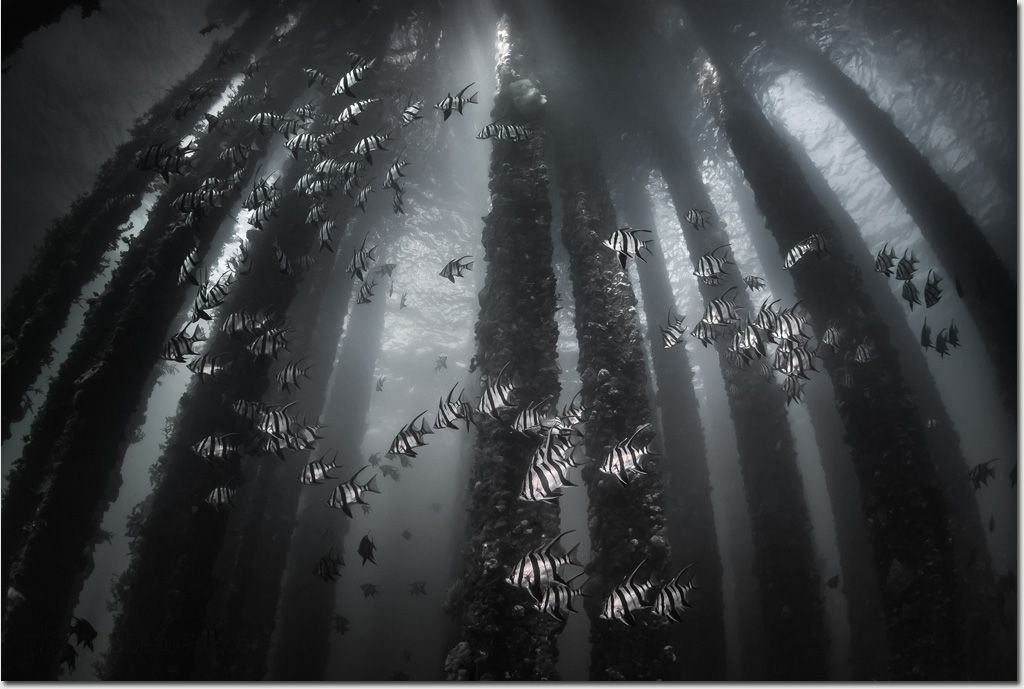
This forest is like non other. It's enchanted.
Take a stroll though any old forest anywhere else and the birds fly out of reach, the rodents hide out of sight while the larger animals just run away.
Take a swim through this forest though and it's like animal wonderland. Fish fly like birds and butterflies around the trunks from ground to canopy.
Larger fish cruise through the scene at eye level keeping no more than an arms length out of reach.
Still larger animals like sharks and rays wander through occasionally, wary but making no attempt to hide as they go about their business.
Every touchable surface from bottom to sky is teaming with animal life such as sponges, crabs, sea stars, ascidians and invertebrates.
This enchanted place under the old Rapid Bay Jetty is my kind of forest.
Photo: Robert Rath, 'Enchanted Forest' 1/125 f/9 ISO640 15mm
Monday, March 28. 2016
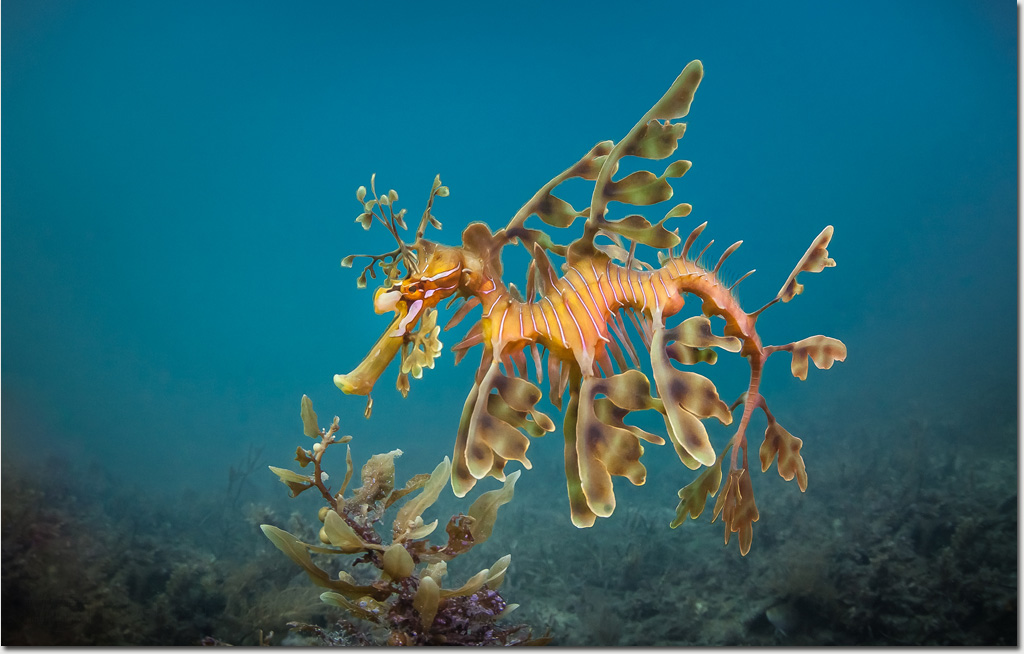
With the festive break over it's back to non-photographic endeavors but at least I got to dive with this guy today to cap it off on a wonderful note.
I usually see at least one Leafy Seadragon when I dive at Rapid Bay however for a while it looked like we might miss out today.
We had traversed the outer T-section following the seagrass beds looking for pipefish and seadragons. The pipefish were abundant but no seadragons were found anywhere.
Down to a fraction of our air remaining we swam to a known dragon lair and there he was, a big male still covered in a fine film of green algae left over from his last brood of eggs.
Time to start looking for little dragons!
Photo: Robert Rath, 'Easter Leafy' 1/200s f/9 ISO640 15mm
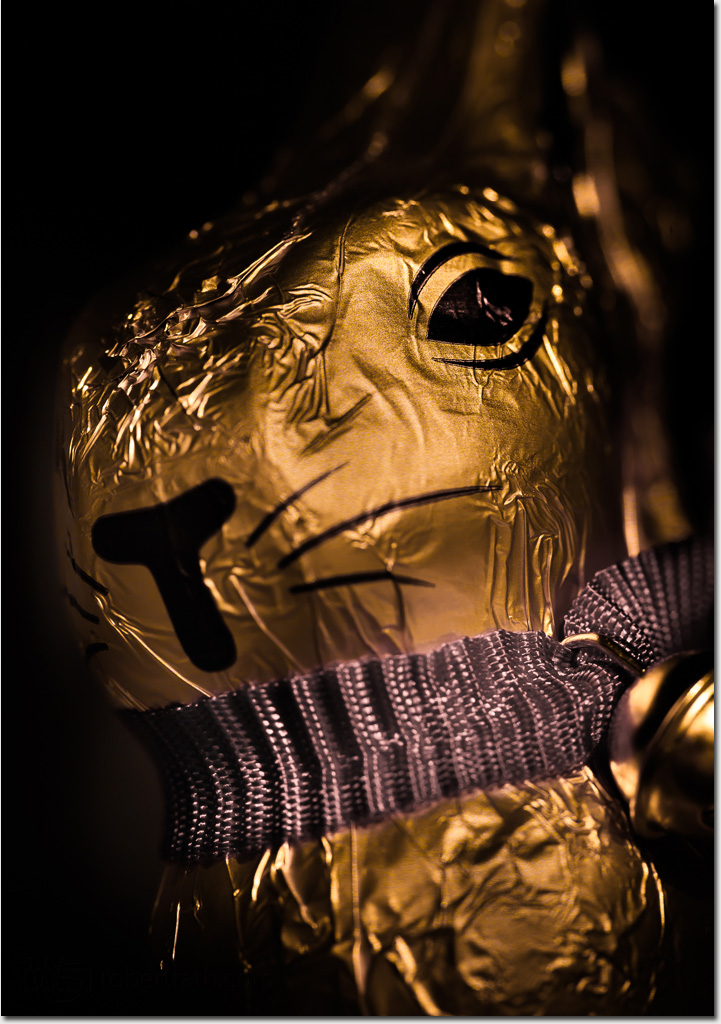
Mr. T's got a dark secret.
Underneath that shiny gold foil-thin facade lurks another creature, a darker creature seldom seen until the very last moment.
He's not made of that insipid brown milky stuff some use as a poor excuse for chocolate.
He's dark, really dark and in a moment he will be gone.
Photo: Robert Rath, 'Mr T' 25s f/6.3 ISO100 100mm
Saturday, March 26. 2016
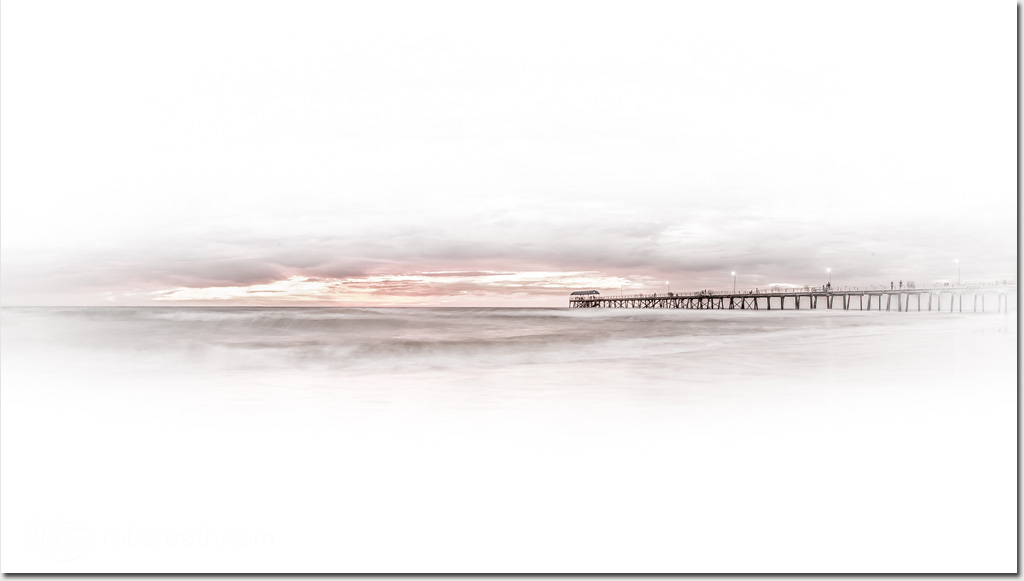
Dreams of the ocean fade in the waking of dawn only to becomes dreams again as day fades to night.
Photo: Robert Rath, 'Henley Dreaming' 1/6s f/18 ISO500 15mm
Friday, March 25. 2016
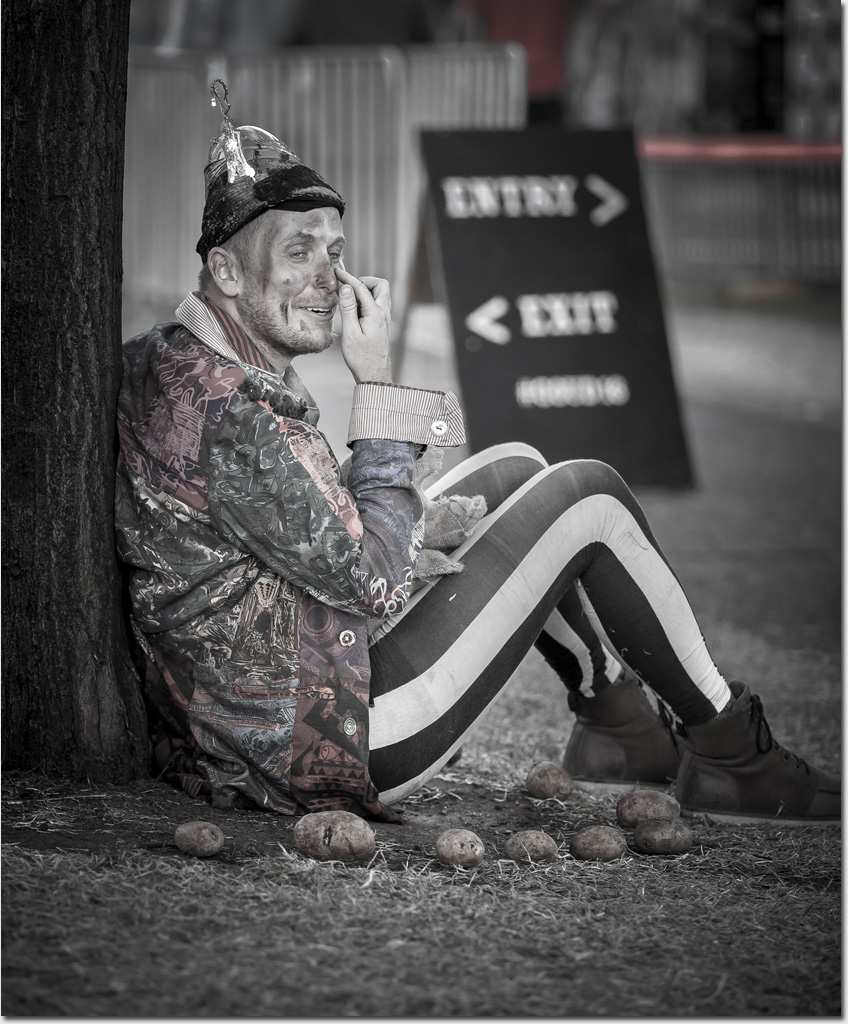
I know absolutely nothing about this man sitting here under this tree.
There he was in his strange garb with with his collection of potatoes just watching the world go by.
Strange perhaps! Not here in the Garden of Unearthly Delights.
Photo: Robert Rath, 'My Potatoes' 1/250s f/2.8 ISO800 200mm
Thursday, March 24. 2016

I first experienced Marcia Hines on stage at ... well let's just say a long time ago.
So it was a wonderful surprise to see the once crowned Australian Queen of Pop again after all these years fronting the Fringe Festival show Velvet.
Velvet was as a spectacle I would have paid money to go back a second time or even a third time. It was visually rich and full of the music which took me on a ride through all my listening life.
Even though it was great seeing the Queen of Pop again, the entire cast made Velvet a show to be remembered.
Photo: Robert Rath, 'Marcia, Queen of Pop' 1/800 f/2.8 ISO1000 200mm
Monday, March 21. 2016
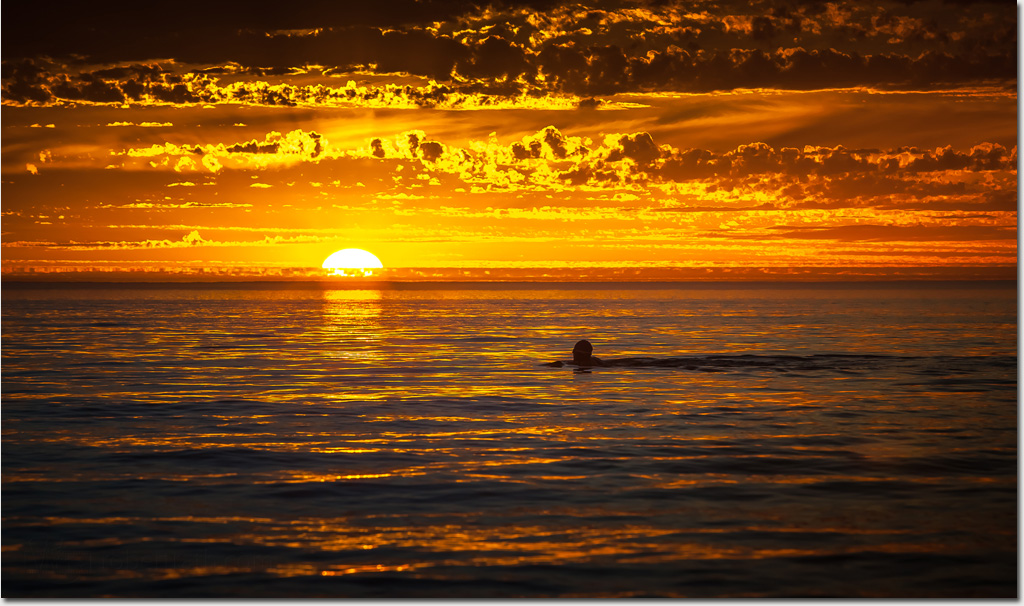
On the land leave only footprints.
In the ocean leave only ripples.
If only we could always live by these rules.
Photo: Robert Rath, 'Leave Only Ripples' 1/640s f/11 ISO160 200mm
Sunday, March 20. 2016
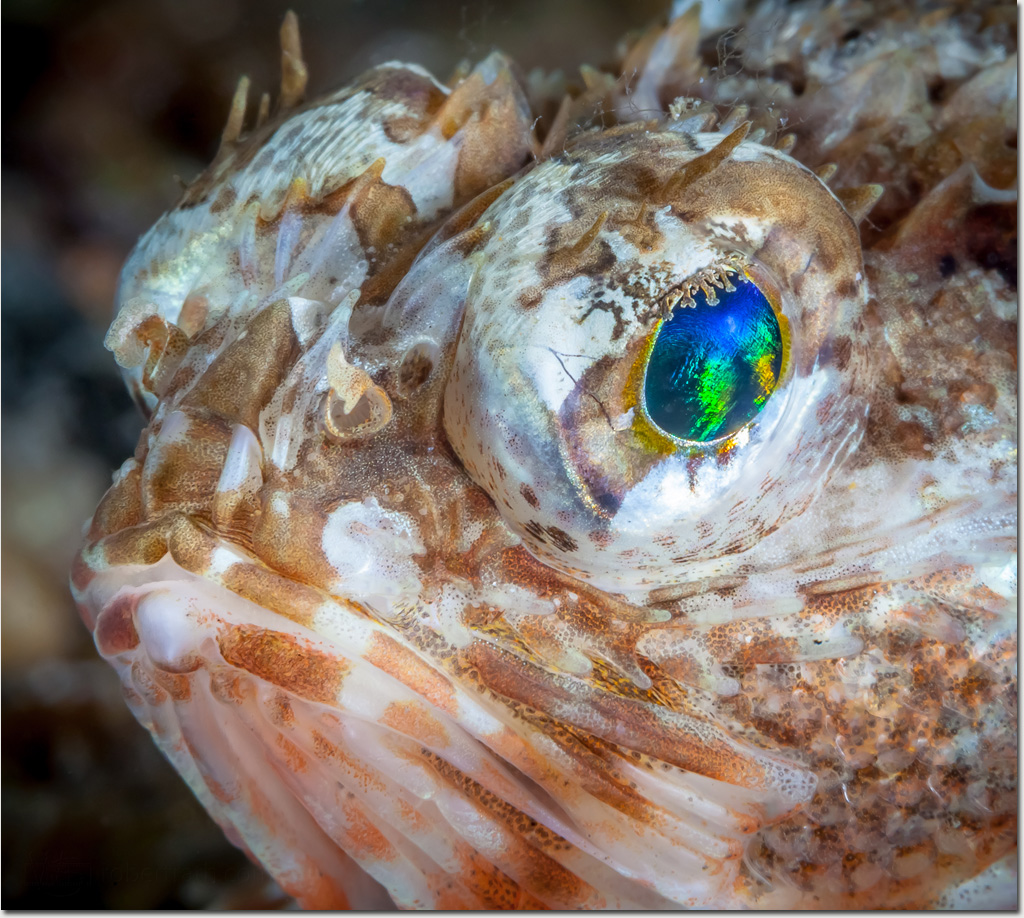
There are many fishes local to a region that you will never find in an aquarium or in the fish markets or even in National Geographic.
They are either poisonous, uninteresting, commercially unviable or just plain ugly. The poor Little Scorpionfish (Maxillicosta scabriceps) seems to fall into all categories.
Those eyes however are magnificent and like the most precious of black opals they just draw you to them in wonder.
Non-divers will never see these amazing opal eyes for themselves but at least we can share a little of the unseen wonder in our local waters.
Photo: Robert Rath, 'Opal Eyes' 1/100s f/22 ISO400 100mm
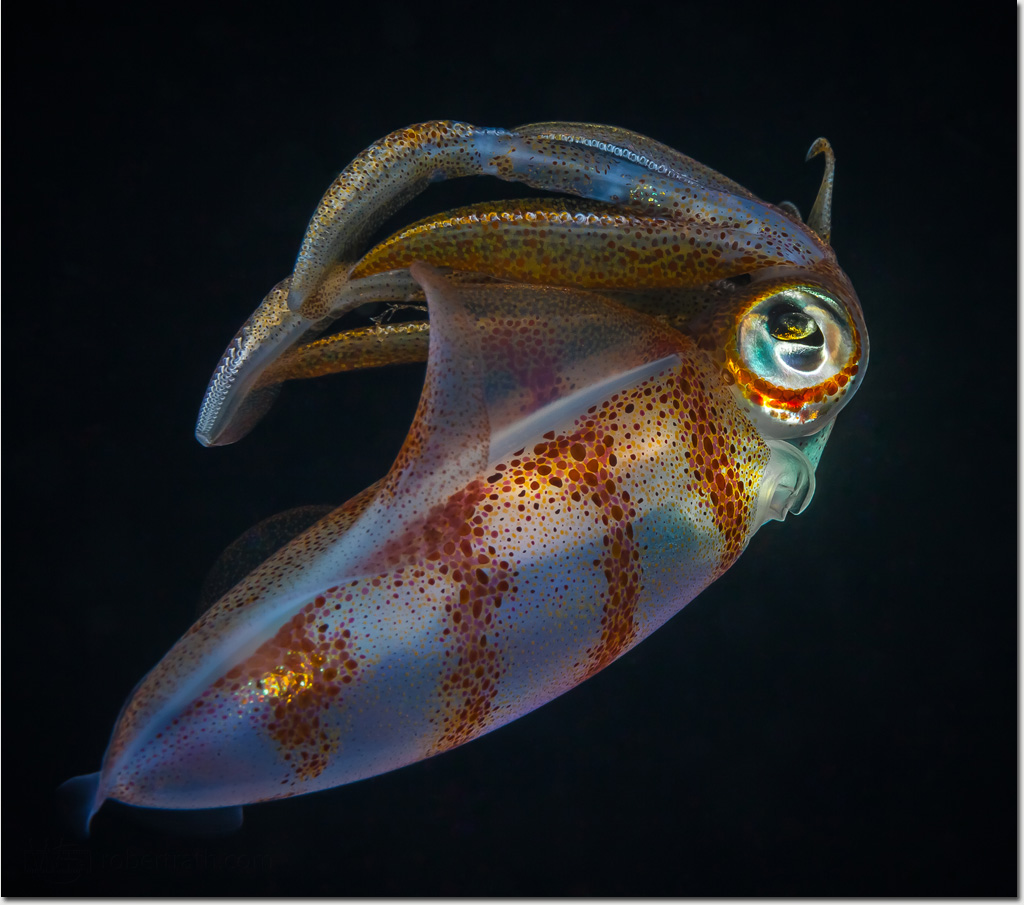
Our Rapid Bay night dive was meant to be about little critters, especially nudibranchs smaller than half my little finder but when this Southern Calamari (Sepioteuthis australis) came into my view I was suitably distracted.
In fact I was so distracted in the strong current that I had drifted 70m or more from the jetty pylons out into seagrass beds.
The amazing coloration of squids is due to the chromatophres in their skin giving them an almost electric vibrance at night,
After a handful of mid-water shots I eventually headed back to the jetty pushing directly into into the strong current for my navigation.
I saw a couple more squid during the dive but none posed for me the way this guy did.
Photo: Robert Rath, 'Electric Squid' 1/100s f/22 ISO400 100mm
Friday, March 18. 2016
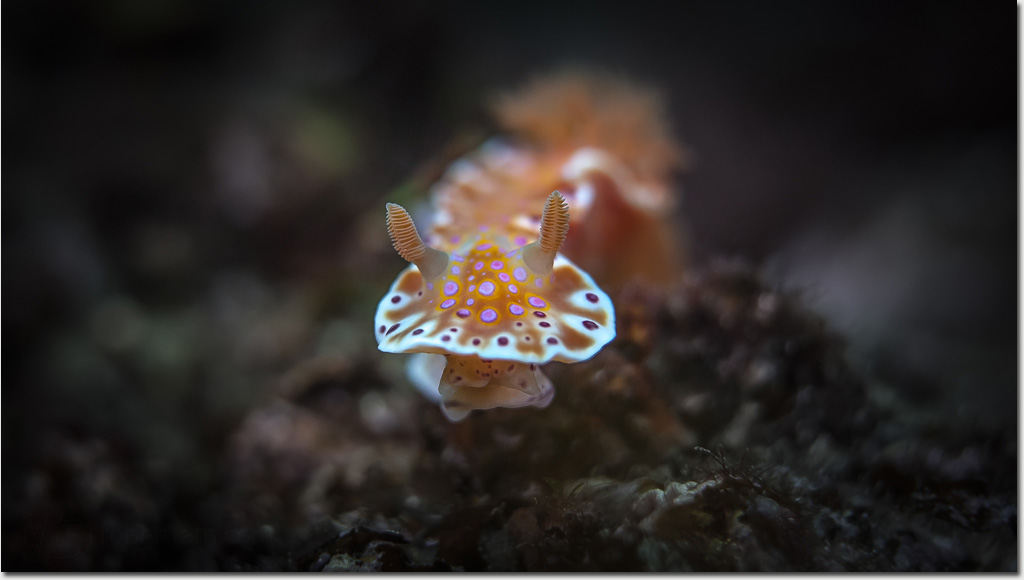
This beautiful creature keeps me coming back over and over looking for nudibranchs under our local jetties.
There is nothing really exotic about Ceratosoma brevicaudatum. They are common, easy to find and come in a range of sizes from the size of my fingernail to the length of my hand.
In fact it is the almost monotonous reliability of finding them that make them so awesome to me because finding them means capturing their images in so many different contexts.
This wonderful portrait presented itself to me under Edithburgh Jetty as the nudibranch lifted its head as if to 'smell the breeze' giving me a pose I'd never captured before.
I rest my case.
Photo: Robert Rath, 'Ceratosoma' 1/60s f/2.8 ISO100 50mm
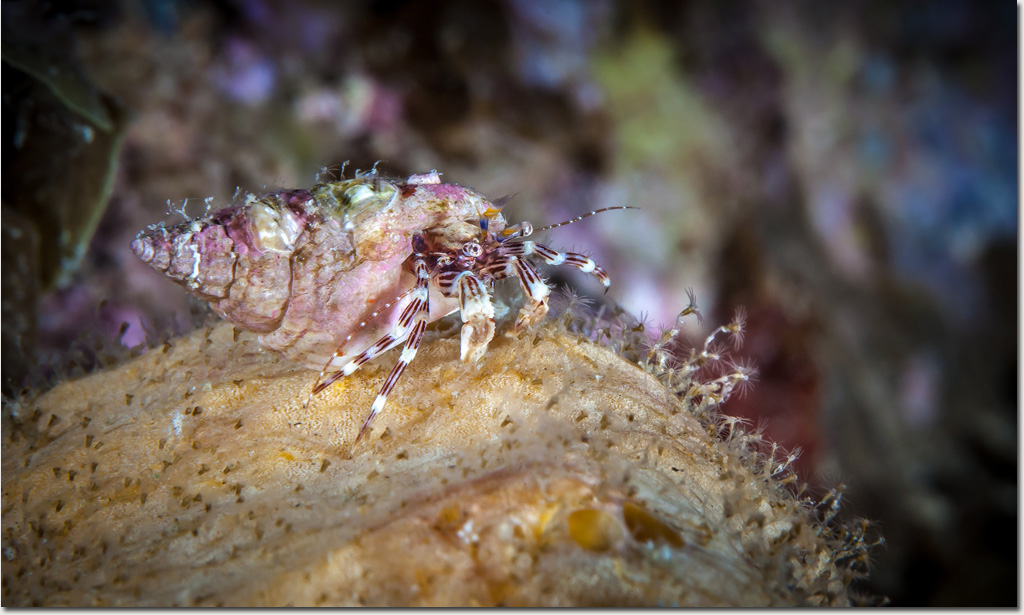
In the past I had described photographing hermit crabs as ‘low hanging fruit’ but this guy was not so easy.
Clarrie's Hermit Crab (Pagurixus handrecki) here under Rapid Bay Jetty is tiny, about the size of my little fingernail and was marching furiously around the top of its own private little hill.
Despite the diminutive size it looked so busy and so full of pride that I nearly missed the moment when it reached the top before starting back down the other side.
Photo: Robert Rath, ‘Top of the Hill’, 1/100s f22 ISO400 100mm
|

































